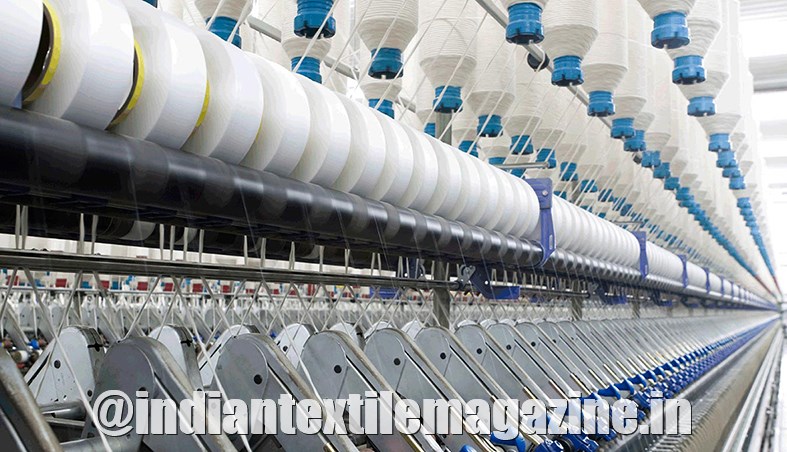There is huge scope for the Indian textile and apparel industry to grow and at a faster pace too but for the stakeholders who must work aggressively. Harminder Sahni, Founder and Managing Director, Wazir Advisors believes that the Indian textile and apparel companies need to achieve manufacturing excellence and, equally importantly, grab the right opportunities. In an exclusive interaction with Ganesh Kalidas, he airs a few pertinent points and offers solutions which have the potential to catapult the Indian textile industry on to the world map

Harminder Sahni, Founder and Managing Director, Wazir Advisors has a word of advice. He has been studying the Indian textile and apparel industry for a long time now and feels that the the industry’s export competitiveness is lacklustre. But it can be remedied if the industry tightens its belt and works aggressively in availing opportunities. Sahni points out a few germane facts about export and domestic markets, especially during the ongoing pandemic: “Take our export market. India is Europe and US-centric in this regard besides exporting large consignments of yarn to China, which eventually land up in these countries only.”
“These markets have recovered after the pandemic as the consumer demand is picking up quite remarkably. Indian export companies have started recovering better as compared to the suppliers in the domestic market. The domestic market is doing well in the home textile segment and some categories of yarn. But other sectors like denim are still struggling. Most apparel brands and large textile companies are hit big because most of the malls are shut. Also, apparel purchasing has become discretionary which may take time to get back on track but once it does, it will bounce back quickly,” he adds.

“With brands being hit, mills who supply to these brands will suffer too,” he further states. India has a large fabric market, especially in Tier II and III, which is doing extremely well since July. Sahni shares: “Robust monsoon has led to good crops and the minimum support price (MSP) has been good too. People in the villages and smaller towns do not seem to be too worried about the pandemic, which is allowing them to move freely. Family functions are being held and attended in good numbers. So, I think the last quarter would prove good for fabric companies and retailers.”
The Bounce Back
Home textiles, innerwear and casual wear are the segments that are doing well, albeit mostly online, during the current crisis. In the small towns, stores selling fabric and garments have been witnessing consistent growth. According to Sahni, it is the formal wear segment which probably will bounce back soon. He adds: “Unlike other industries, textile consumers exercise discretion. They are now thinking twice because the need to go out has reduced. The impact on the industry is already visible. Smarter, sharper, and aggressive companies will dominate the market.” Most of the consumption in the country over the last 5-7 years has been posted mainly from smaller towns and rural areas and not from urban centres. Yet, aggressive investment in new businesses and capacities will still take time.
Scope of Export Growth
India is the second largest manufacturer of textiles and apparels in the world which is estimated at USD 142 billion. Of this, 74% is consumed domestically while the remaining 26% is exported. In the last few years, the sector has been growing in double digits despite global uncertainties and demand slowdown. Indian textile exports to China have not been hit much due to the slowdown during the pandemic, Sahni feels. The sentiment in the market, owing to the geopolitical tensions between US and China, is that businesses will shun China and come to India.
According to Sahni, multiple inquiries have definitely come India’s way and a few companies have even grabbed the business smartly. He says: “Indian textile exports can grow at a faster pace. The reason for lag is not lack of opportunity but our inefficiency and low productivity in manufacturing excellence. We are competitive in the textile segment. Countries like Bangladesh and Vietnam have been focusing on the garment-making industry whereas in India we have failed because it is run like a cottage industry and is highly unorganised. This way we cannot compete with China.”
“Our efficiency, productivity and service levels are extremely poor. So, it really does not matter if we have bigger opportunity due to the US-China conflict unless we smarten our efforts,” he adds. Sahni believes that government policies have been highly supportive of the industry but the industry is yet to leverage the advantages. He poses a question: “Why is it that the largest company does Rs 6,000 crore worth of exports, the second largest Rs 1,200 crore and the rest do business worth Rs 2,000+ crore? The remaining ones are way below. Individual companies need to figure out how to grow their businesses.”
The Path Ahead
Sahni is clear that the reason for poor service levels in our garment industry lies with the textile mills. All round growth – be it the industry size itself or of the individual players – can happen only when they work closely with the mills. He explains: “There are big companies in textiles that need to look at forward integration, whether directly or indirectly, through an innovative model where there will be multiple ancillary units helping them. But it must happen at a scale where a company signs a contract with an international apparel brand to ship USD 1 billion worth of garments every year.”
“All the enabling pieces are available but somebody must work at that level, which currently is not happening. International brands are capable of buying garments worth multi-billion dollars every year from our companies. But where are the suppliers? Large companies can sign multiple contracts like these,” he adds. He further opines that Indian garment companies ideally should take the retail franchisee route where a local entrepreneur runs the business as his own but under the parent brand, which becomes a win-win equation.
The Think Tank
During the ongoing pandemic, Wazir Advisors’ team members have been busy helping their clients on a pro bono basis by sharing information, data and solutions to help them with marketing and build relationships with clients through videos, webinars, etc. Wazir Advisors is founded on the three pillars of strategy, implementation and alliances. Sahni takes the opportunity to explain: “We work on the strategy to help our clients envision their future and help build their business in that direction. We accordingly suggest what their corporate strategy should be in the future. The second pillar is implementation assistance in operations wherein we help our clients increase their productivity, efficiency and work with them at their factory and off-shore sites. The third one, which is alliances, takes the form of joint ventures, mergers, acquisitions and fundraising.”
“Currently, the alliances field is abuzz with activity. There are many companies which are looking at joint ventures to consolidate. But these things take time to fructify even in normal times. In today’s scenario, it could take even longer. During the pandemic period the number of such discussions has increased quite a bit. A lot more companies are open to the idea. In the Indian textile industry, we generally do not see much consolidation at the domestic level,” he adds. Sahni and his advisors provide end-to-end solutions spanning the complete business cycle in the textile value chain. And it is up to the stakeholders to pay heed to his expertise since Sahni is uninhibited in calling a spade, well, a spade!